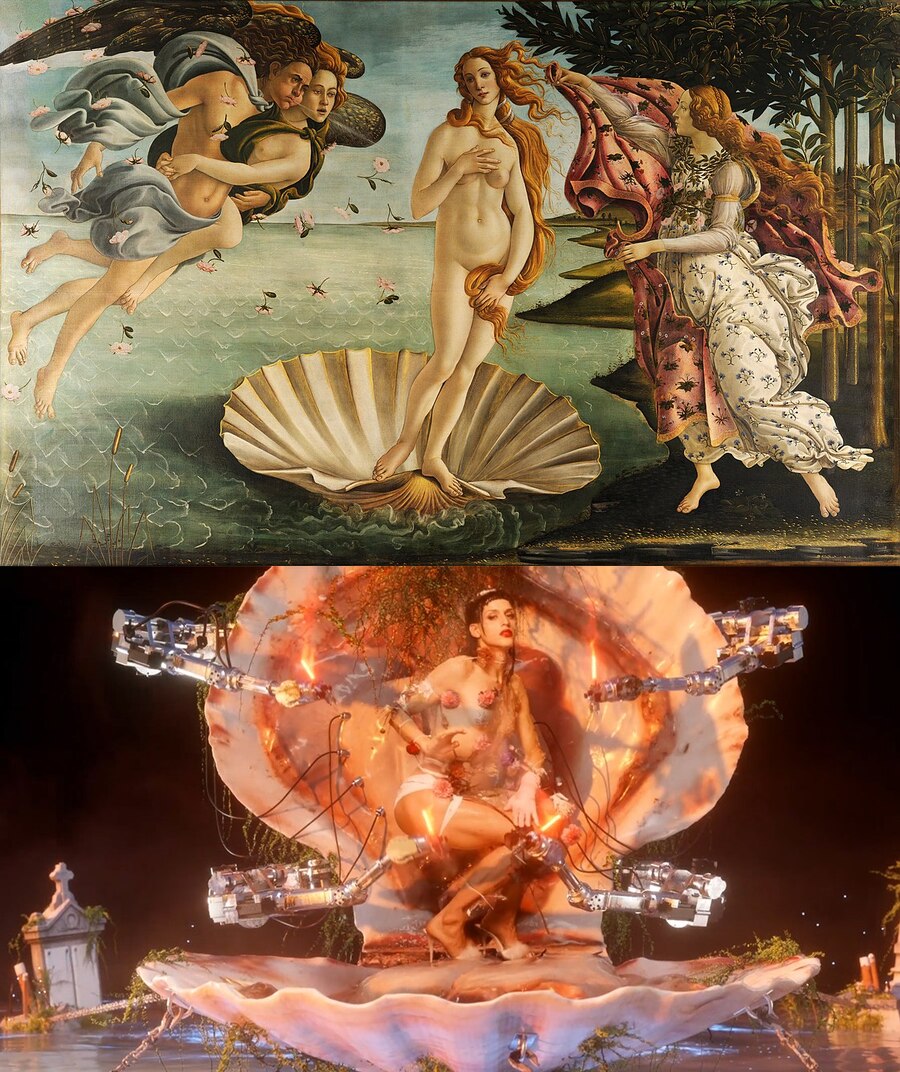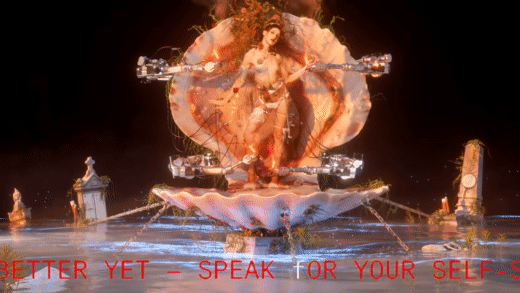Rewriting Humanism:
Arca, Posthumanism, and Gender Acceleration
by Jay Dye
"Nonbinary"
"Nonbinary" opens with a shot of Arca lying contorted on her side, steam rising around her. Surgical scissors penetrate her side; a prosthetic brace lines her right knee and inner thigh; two metal antennae rise from her head. When the song's refrain comes in ("speak for your self states"), the visual changes to a The Birth of Venus-inspired shot, featuring Arca standing within a clamshell in a body of water.

The key difference here is the presence of 4 robotic arms coming from around the clamshell, slowly waving small torches around. Botticelli's painting centers the attention on the nude human form of Venus; all other elements of the painting draw attention towards her, the clamshell existing solely as a stand to display her body. Human beauty is prioritized above all else. Arca, meanwhile, gives her clamshell its own agency through technology. Attention isn't just drawn to Arca's body, but also moves to the clam's robotic arms. It has more arms than she does! It should also be noted that Arca's clamshell is far bigger than Botticelli's, being roughly as tall as she is, rather than Venus's minuscule platform. Nature—or, whatever this is—the nonhuman, the Other—is given as much prominence as Arca herself is. What, before, was "natural," the untouched ocean, is rewritten by Arca to be something new, not quite natural and not quite technological, but a synthesis of both.
This is the land of the cyborg, for, as Haraway wrote, "[t]he cyborg would not recognize the Garden of Eden; it is not made of mud and cannot dream of returning to dust" (Haraway 9). Arca, the posthuman, is too enmeshed in technology to return to some sort of mythical, untouched nature (which never really existed in the first place). No; we became "cyborgs when Adam and Eve first decided to wear clothes and thus fuse the inorganic to the organic" (n1x). Arca, as a trans woman, "is unique. Her performance of herself and her desire has been intertwined with technocapital, in a way that could not even be cast off if she wanted to rip out a cybernetic implant. She is, in other words, perhaps the first truly molecular cyborg" (n1x).

The refrain from "Nonbinary" urges the listener to "speak for your self states," a call to embrace multiplicity and recognize that self exists in flux, in relation to and with, rather than as a fixed, independent identity. This is a fundamentally posthuman mode of existence that embraces the complexity of consciousness. "The cyborg delights in her technological complicity and recognizes the plasticity of categories of being," the way states of existence are mutable and prone to change over time (Graham 228).
These lyrics scroll along the bottom of the screen in alternating upper and lowercase, toying with a binary embedded in language itself. By understanding their meaning and embracing the call to nonbinary existence, "[a]s you gaze at the flickering signifiers scrolling down the computer screens, no matter what identifications you assign to the embodied entities...you have already become posthuman" (Hayles xiv).
Choose Your Level